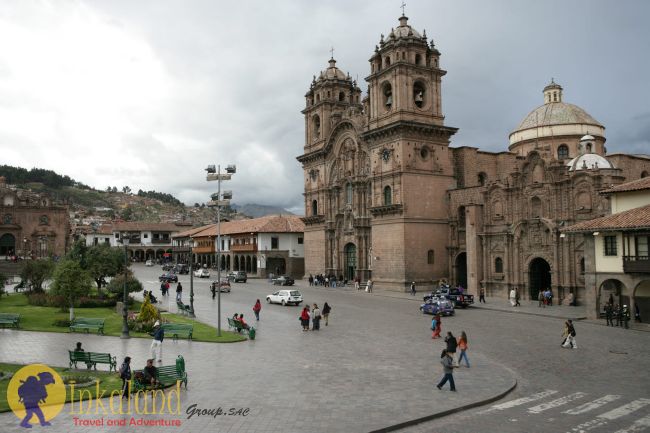CUZCO
Situated in the Peruvian Andes, Cuzco developed, under the Inca ruler Pachacutec, into a complex urban centre with distinct religious and administrative functions. It was surrounded by clearly delineated areas for agricultural, artisan and industrial production. When the Spaniards conquered it in the 16th century, they preserved the basic structure but built Baroque churches and palaces over the ruins of the Inca city.

The City of Cuzco maintains the spatial organization and most buildings from the ancient Inca Empire capital and the Viceroyalty. Along its streets and squares, it shows its original urban and architectural characteristics. Despite urban growth, the sectors that make up the Inca imperial city are recognizable, including the ancient stone structures and their advanced construction technique. Such structures define and enclose streets and canchas (housing units), on which colonial and republican houses, monasteries and churches rose and kept intact all their architectural components and works of art inside them. This entire group of attributes can be found unaltered within the delimited area maintaining its structural, material and urban integrity.
One of the main factors threatening the integrity of the City of Cuzco is earthquakes. After the 1950 earthquake many culturally valuable buildings deteriorated and have not been repaired yet due to lack of funding. The lack of technical and regulatory documents on urban management generates saturation of services in the city centre disrupting its integrity and affecting its use. Several private buildings are deteriorated by overuse, overcrowding, lack of maintenance and lack of financial resources which threatens their physical integrity.
The authenticity of the City of Cuzco is supported by the physical evidence of its urban composition in streets and squares, original layout, urban and architectural values, use of space and the Inca and Colonial architecture. These characteristics are testimony of Cuzco’s importance as centre of the political power and of its symbiosis with colonial settlement and assembling patterns from the 15th century, which allows us to more clearly understand the city and its historic processes. The site’s originality and authenticity is also supported by 16th century documents collected by direct witnesses since the Hispanic conquest. The factors threatening the attributes of the City of Cuzco have not affected the authenticity of its basic elements. However, new tourism development is threatening the preservation and functional capacity of ancient buildings, which in some cases are altered or replaced by new buildings for tourism and trade, relocating the original dwellers to the periphery.
The City of Cuzco is classified as cultural heritage of the nation as a Monumental Area in accordance with Supreme Resolution Nº 2900, dated 1972, which establishes its protection scope but does not specify its buffer zone. According to the same regulation, all streets in the delimited area are classed as Monumental Urban Environment and 103 historic valuable buildings are classed as Monuments. This heritage is protected by the National Constitution, and by Law Nº 28296, General Law for National Cultural Heritage, among others.
The Ministry of Culture and the Provincial Municipality of Cuzco are mainly responsible for the conservation and management of the property and perform constant urban assessments, registration, protection, supervision and control works. The Municipality of Cuzco is responsible for authorizing intervention works in the city and also participates in preservation and restoration of cultural heritage programs and projects.
After the 1950 earthquake, recovery and restoration interventions of archaeological and historic monuments began in the City of Cuzco which were continued through 1973 Projects also included technical training of specialists to improve the technical level and tools for preservation. However, the City of Cuzco has developed the cadastre and has updated inventory and the declaration of monuments. A management plan for the City of Cuzco, which is fundamental for protection, was developed in 2005 and is currently being implemented.


Comment (0)